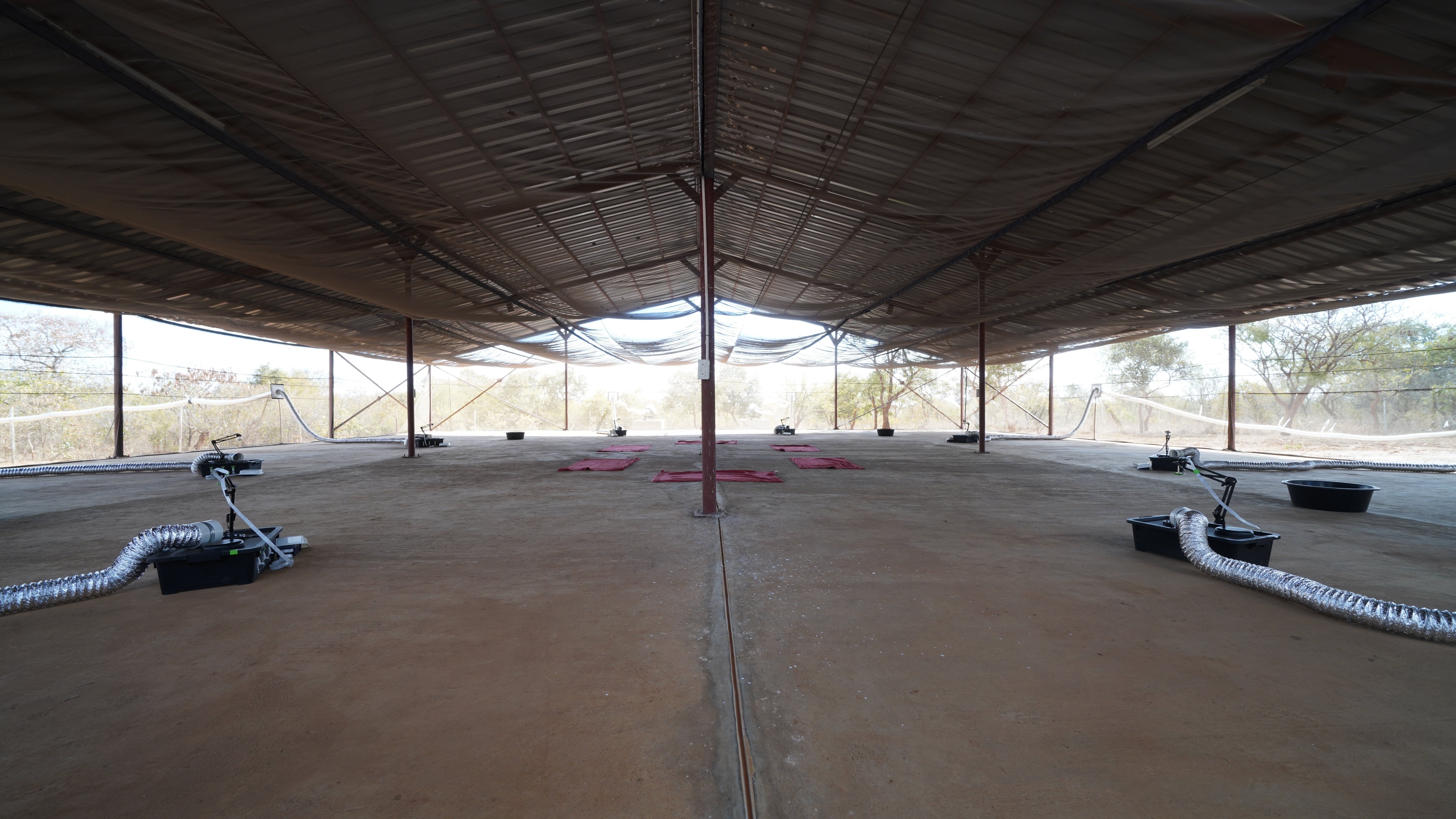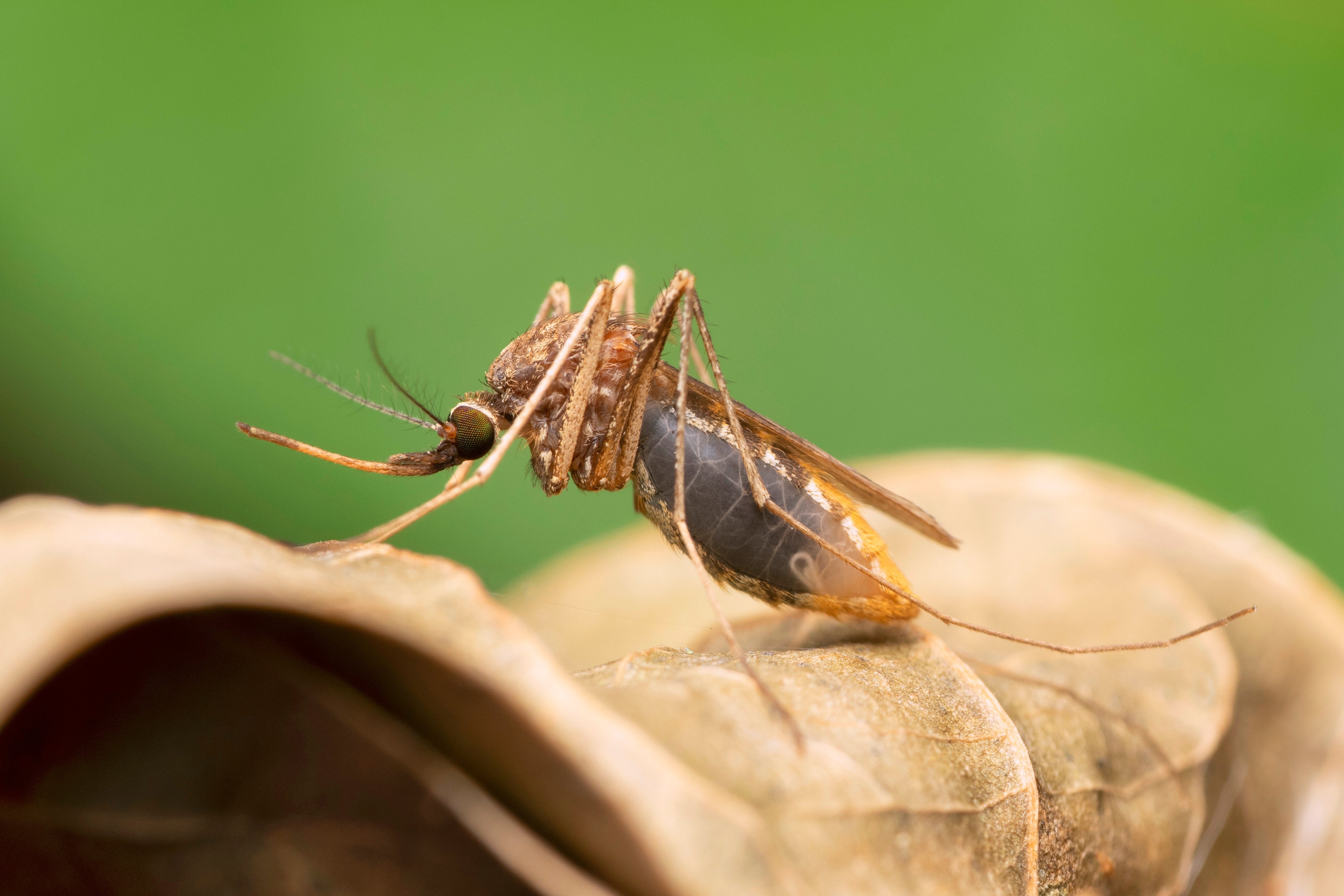Researchers created a giant sniffing arena for mosquitoes, all in hopes of understanding why they’re so drawn to us. Among other things, they found that human body odor was more alluring to the insects than the mere presence of carbon dioxide, a chemical that we exhale.
Plenty of research has tried to figure out how female bloodsucking mosquitoes find and choose the humans they feed on. But according to study author Conor McMeniman, these studies often find it hard to capture the complex nature of mosquito attraction. So, in partnership with researchers at the Macha Research Trust in Zambia, Africa, McMeniman and his team decided to build a more naturalistic setting for their experiments.
“In the laboratory, the majority of studies used to test mosquito smell preferences are performed on very small scales, in small boxes with volumes of around 0.5 cubic meters or less,” McMeniman, a researcher at the Johns Hopkins Bloomberg School of Public Health’s Malaria Research Institute, told Gizmodo. “For the study in Zambia, we used a structure called a semi-field flight cage — a screened structure with a volume of around 1,000 cubic meters, about 2,000 times the volume used for regular laboratory assays.”

The cage was outfitted with evenly spaced heating pads, which could warm up to the typical human skin temperature (roughly 95 degrees Fahrenheit). On these pads, the team could also entice the mosquitoes over by releasing varying amounts of carbon dioxide and human scent. Thankfully, the human volunteers involved were kept safe, since their odor was provided by funelling air from the single-person tents they stayed inside. As its test subject, they used a human-loving and common malaria vector called Anopheles gambiae.
The sheer size of the mosquito arena allowed the team to compare the scents of six humans at once, well above the typical two scents used in similar comparison studies, McMeniman said. It also let them see how the mosquitoes would hunt at night, their preferred time to feed. At night, about 200 mosquitoes would be released into the cage, where they would have their activity tracked with infrared cameras. If the bugs landed on a heating pad, that would indicate their willingness to chow down.

Body heat alone didn’t bring the mosquitoes running over for a potential meal, the researchers found. The mosquitos did become attracted to the pads once carbon dioxide was added to the mix. But of the three factors, it was body odor that was the most alluring on its own to the bloodsuckers.
“In this study, we found that human scent is critical for the Anopheles gambiae to be drawn into the proximity of a potential host, whereby they then can detect warmth from the human skin,” McMeniman said. The team’s findings were published Friday in Current Biology.
As other research has shown, though, the mosquitos in this study had their clear favourites among the humans. And within people’s individual musks, the team identified chemical components that appeared to be incredibly attractive or repulsive.
“The most attractive individual had a scent signature with increased abundances of a number of light airborne carboxylic acids, as well as another chemical called acetoin that is likely produced by the skin microbiome,” McMeniman explained. “Interestingly, the individual that was least attractive in our screen had a scent signature that was radically different from the other volunteers — being enriched for a chemical called eucalyptol and depleted of a lot of other airborne chemicals found in other volunteers that were more attractive to mosquitoes, including the carboxylic acids we found.”
These findings suggest that high levels of eucalyptol in the body might be an great deterrent to mosquito bites. It’s likely that this person ate foods rich in the chemical, which is commonly found in herbs and spices, the authors say. But it’s also possible that he used external products that contain it, such as toothpaste and mouthwash.
“Understanding what chemicals in human scent drive differential attraction to certain humans is important, because if we can identify these chemicals, we can help to inform personal bite risk,” McMeniman said. This research could also help scientists develop better baits or traps.
More research is needed confirm the team’s results. But this study is only the beginning of their work. Over the next few years, they plan to run larger experiments in Zambia that will involve over 100 humans. In the U.S., the team will be trying to better understand the entire library of chemicals that can be found in our scent. They’re hoping to eventually build a similar testing arena in the U.S. to study local disease-spreading mosquitoes.
